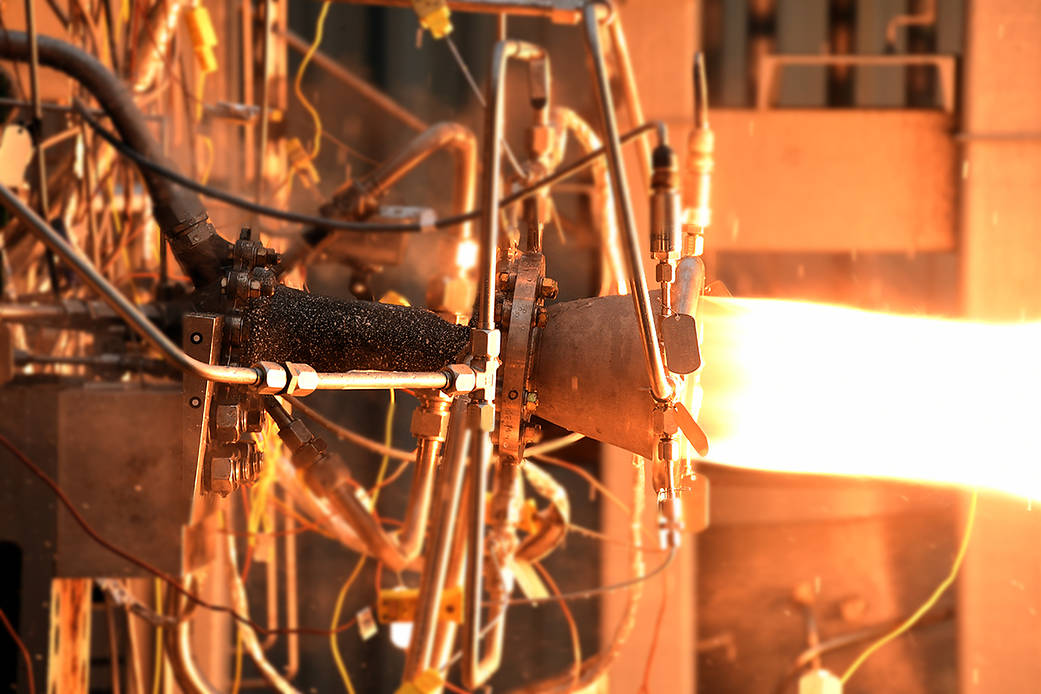It’s rocket science—one NASA project is revolutionizing how liquid rocket engines are made. Additive manufacturing, better known as 3D printing, combined with advanced composite technology could help rocket engines be lighter, cheaper and easier to make.
Engineers at NASA tested a 2,400 lbf thrust 3D-printed copper rocket thrust chamber with composite overwrap to see if the uniquely made hardware could withstand the heat and structural loads from testing.
A total of 18 hot fire tests at high chamber pressure were conducted at NASA’s Marshall Space Flight Center, and the 3D printed hardware successfully withstood the heat and loads. The tests demonstrated the new 3D-printed and composite technologies, as well as a new additive technique for the nozzle, were feasible for thrust chamber assembly.
The tests were part of NASA’s Rapid Analysis and Manufacturing Propulsion Technology (RAMPT) project. Future RAMPT development work, under a public-private partnership with Auburn University and specialty manufacturing vendors, will mature the design and manufacturing technologies to increase scale, reduce cost and improve performance. Once complete, NASA will transfer the innovative technologies to industry.
Led out of the NASA Space Technology Mission Directorate’s Game Changing Development program, the RAMPT project addresses the longest lead time, highest cost and heaviest component in a rocket engine system.



























